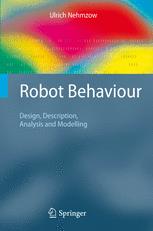

Most ebook files are in PDF format, so you can easily read them using various software such as Foxit Reader or directly on the Google Chrome browser.
Some ebook files are released by publishers in other formats such as .awz, .mobi, .epub, .fb2, etc. You may need to install specific software to read these formats on mobile/PC, such as Calibre.
Please read the tutorial at this link: https://ebookbell.com/faq
We offer FREE conversion to the popular formats you request; however, this may take some time. Therefore, right after payment, please email us, and we will try to provide the service as quickly as possible.
For some exceptional file formats or broken links (if any), please refrain from opening any disputes. Instead, email us first, and we will try to assist within a maximum of 6 hours.
EbookBell Team

4.7
26 reviews"Robot Behaviour - Design, Description, Analysis and Modelling" is the successor to the first textbook published in this field: Scientific Methods in Mobile Robotics and introduces the emerging field of scientific methods in mobile robotics to a wider audience of advanced undergraduate students, postgraduate students as well as researchers in robotics, artificial intelligence, cognitive science, ethology, biology and psychology.
Raising some of the big questions that roboticists should be concerned about - how can (robot) behaviour be described quantitatively?, how can experimental results be compared meaningfully?, is it possible to design faithful and accurate robot simulators@, etc - , this book gives indicators on how these might be addressed, and looks at how behaviour - in this case the behaviour of autonomous mobile robots – can be measured quantitatively, analysed, compared, and modelled. Statistical methods are introduced to compare behaviours and to state statistically significant differences in behaviour. Transparent modelling techniques derived from system identification are presented to obtain models of robot behaviour in closed mathematical form.
With numerous exercises (and solutions) and examples from research, including how robot behaviours can be compared and evaluated, how robot platform-independent code (Robot Java) can be obtained, how to determine analytically which sensors of a robot are important and which are not, and how to obtain robot control code directly from observing a human demonstrator,without any traditional programming, this book will be of great value to researchers and graduate students in mobile robotics, behavioural science and cognitive science.